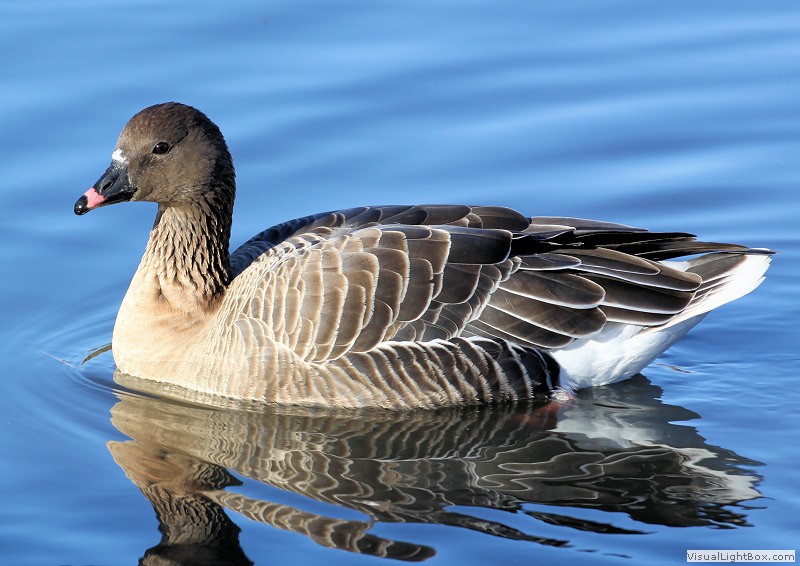
A good place to start photographing Ducks, Geese, and Swans is at a duck pond in your local park, or a wildfowl reserve such as the Wildfowl & Wetlands Trust (WWT) in the UK. Here you can get very close to many of the birds and need only a basic digital camera.
There will be times that you need much more reach and your options are to buy a Digital SLR and long telephoto lens or to get a good scope and attach a basic digital camera to it which is called Digiscoping.
Digiscoping is the name given to using a digital camera attached to a spotting scope. The advantages of Digiscoping over using a Digital SLR and long telephoto lens is that scopes have much more magnification and can be a much cheaper alternative. However Scopes have to be manually focused and birds in flight are hard to track compared to a Digital SLR Camera.
Spotting Scope
You will need a good quality scope preferably with a large objective lens of about 80mm which will let much more light into the camera then a scope with a smaller 60mm objective lens. More light means you can use a higher shutter speed and lower ISO setting on the camera.
Scopes with high resolution glass (ED) will give better results but will also be more expensive.
Camera
For Digiscoping you only need an inexpensive digital compact camera, preferably with a 3x optical zoom, various Exposure Programs such as Aperture Priority (Av) and Manual Mode (M), an internal zoom lens, and the ability to attach a shutter release cable.
Using a Scope & camera can cause vignetting which is usually cured by increasing the camera zoom.
As well as taking static photographs, you can also take video footage using a Digiscope. It is also a good idea to have plenty of spare batteries, and memory cards.
As Digiscoping becomes more popular then there are more accessories available such as adaptors to connect the camera to the scope.
Tripod
When Digiscoping you will need a very good sturdy tripod to keep the scope and camera steady. With the high magnification available on a scope then the smallest vibration can result in a blurred image. You will also need a good tripod head that will allow you to pan and tilt easily. Carbon Fibre tripods make the set up much lighter.
Digital SLR Camera and Lens
Another way to photograph birds at distance is to use a Digital SLR Camera with a long telephoto lens. These cameras are very versatile in that there are various lenses available for all sorts of photography and focal lengths. Focusing is accurate, image quality is excellent, there is no shutter lag, and you can take photographs hand-held or with a tripod and also photograph birds in flight. However these cameras and especially the lenses are very expensive and even the longest telephoto lenses are no match for the magnification of a Spotting Scope.
Digital SLR Camera
Digital SLR Cameras are now much more affordable than before and even the cheapest DSLR cameras are very good. Two of the most popular makes are Nikon and Canon although when it comes to using good quality long telephoto lenses then Canon will probably be a better choice.
Digital SLR Lens
The choice of lens is much more important than which camera to buy and there are many different telephoto lenses available depending on how much you are willing to pay.
For a Canon DSLR Camera, a good entry level lens would be a Canon 70-300mm lens preferably with Image Stabilisation (IS), and Ultrasonic Motor (USM) for faster focusing. A better lens would be the Canon 100-400 f/4.5-5.6 L IS USM or Canon 400mm f/5.6L USM lens or Sigma 150-600mm f5-6.3 DG OS HSM Lens. The best lenses include the Canon 300mm f/2.8 L IS USM, and the Canon 500mm f/4.0 L IS USM lens which are very expensive and heavy but will work well with extenders to increase the lens focal length.
A lens of 50mm is equivalent to x1 magnification, so a super telephoto lens of 500mm would give you x10 magnification which is considerably less than the magnification of a scope.
